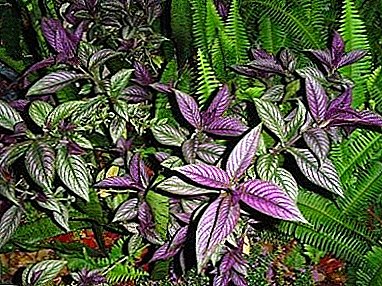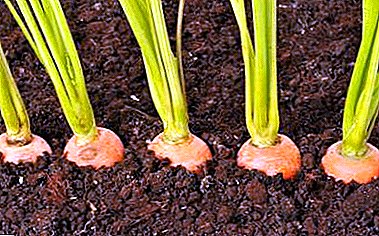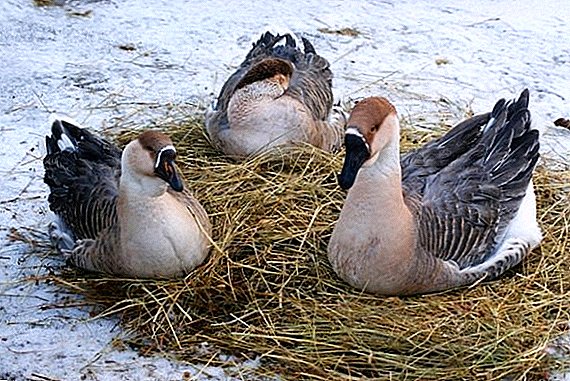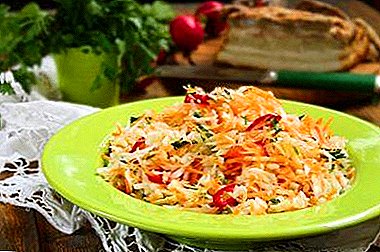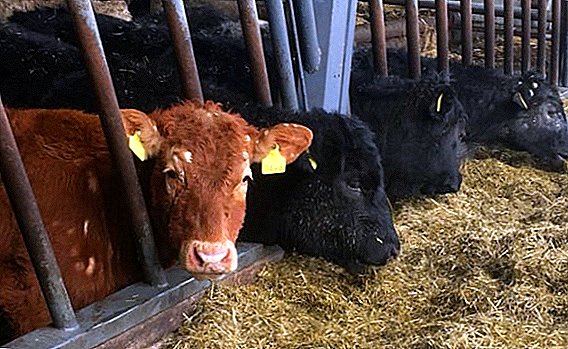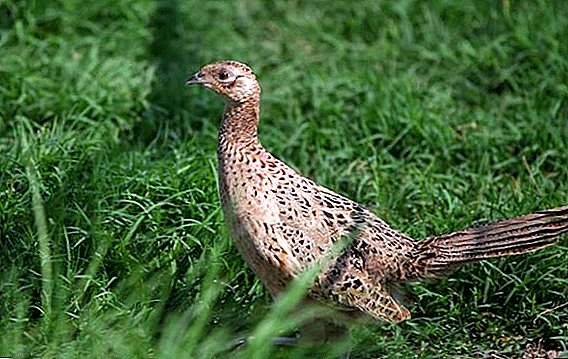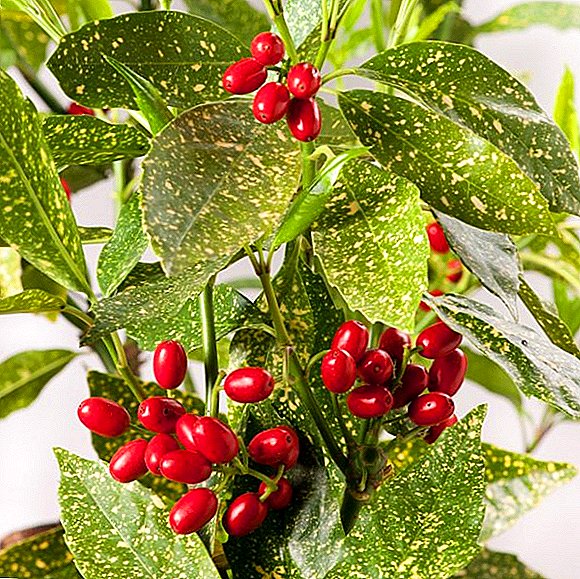 Unusual exotic houseplant Aukuba Japanese attracts flower growers with the original color of leaves - each leaf is a true artistic masterpiece, studded with luxurious golden patterns.
Unusual exotic houseplant Aukuba Japanese attracts flower growers with the original color of leaves - each leaf is a true artistic masterpiece, studded with luxurious golden patterns.
But, as a representative of humid subtropics, the plant needs to organize appropriate conditions. Learn how to properly care for exotica in a normal apartment, and how to multiply.
Botanical description of the plant
Japanese Aukuba, or, as it is called, the golden tree, is a perennial shrub whose natural habitat is humid subtropics. Under natural conditions, the flower grows in Korea, the Himalayas, the People's Republic of China. Homeland culture - Japan, whence came the official name.
Aukuba grows in the form of a small shrub or tree. In nature, its length is capable of reaching 4-5 m, in an apartment - a maximum of 2 m. The plant belongs to a highly branched, its bark is smooth, dark green in color, with rare red or brown patches. The leaves are broad, leathery to the touch, with a notched edging, have a lanceolate form; they are characterized by a unique fold along the main vein. The length of the leaves is 50-80 mm, width - 20-50 mm.

Aukuba is a dioecious plant, during the flowering period it forms small flowers with a diameter of 4-8 mm, which have four petals of a purple-brown color. On 10-14 flowers form inflorescences of umbrella type. In place of flowers, fruits are subsequently formed - beautiful red or orange berries, with a diameter of up to 10 mm, which look like dogwood berries. Inside each fruit is a single seed. Exotic berries - highly poisonous.
Important! Under flat conditions, the plant almost never blooms, because two bushes are needed to form the ovaries: the male and the female type.
Conditions for growing at home
Since humid subtropics are the birthplace of aucubus, in order to successfully grow a crop in an apartment, it needs to create as close as possible to natural conditions.
Location and lighting
Exot is characterized by undemanding to lighting and is able to grow well in shade and in a sunny place. However, the intensity of illumination will determine the color of its leaves: with enough light, the leaves acquire a beautiful bright golden hue and increase the size of the characteristic spots on the leaf surface. At the same time the light should be bright, but diffused.

Exposure to direct sunlight can cause burns on the leaves. The optimal location for indoor plants is the eastern or western side of the apartment. In the summer, aukubu can be taken out on the balcony, protected from direct sunlight and drafts. In winter, it is recommended to install it in a well-lit place.
Air temperature and humidity
The exotic flower prefers average temperature indicators, which in summertime are + 18-21 ° С, and in winter - + 13-14 ° С, but not lower than + 6 ° С. A golden tree is a plant that reacts negatively to extreme heat, so the maximum temperature in summer should be + 21 ° С, when this level is exceeded, the bush will begin to fold leaves and quickly lose its decorative effect.
Together with the temperature indicators, it is necessary to regulate the humidity level in the room. In summer, in extreme heat, the plant should be regularly sprayed with a spray bottle. Shrubs that grow in a cool microclimate in winter do not need spraying.
Important! High humidity in combination with low temperatures can be a favorable environment for the development of fungal ailments.
Home care
Despite the exotic origin of aucuba, caring for it is not as difficult as it seems at first glance.
Watering rules

The main rule of watering the plant is to maintain the soil in a stable state, in a moist state. It is necessary to carefully control the condition of the soil, and to prevent its excessive moisture, which can cause rotting of the root system.
Culture irrigation activities are carried out according to the season: in the summertime, water is plentiful, focusing on the condition of the upper layer of the earth, in winter - moderately, with a small amount of water. Exot can be attributed to drought-resistant flowers, but with a regular shortage of moisture, its leaves begin to turn yellow, lose a rich color and fall off.
For humidification, it is recommended to use soft, separated water at room temperature. Water culture directly under the root, ensuring that moisture does not fall on the leaves and stems. After 10-15 minutes after moistening, the excess water from the pan must be drained.
Top dressing
Experts recommend combining watering activities with plant nutrition. Aukuba especially badly needs fertilizers during the phase of active growth, in spring and summer.
Did you know? In Europe, exotic came in the early XVIII century. However, it turned out to be a female-type shrub that did not produce fruit during growth. Later, a botanist from Britain, Robert Fortune, managed to start a female and male tree, grow a new plant from them and select the best specimens for breeding.Prepared solutions of mineral, organic or complex preparations are suitable for top dressing, the first two of which are added in turn. The optimal scheme of feeding exot is considered once every 10-14 days. In winter, in the resting phase, fertilizing is not necessary.
Pruning
Since culture is categorized as highly branched, it requires systematic pruning and shrub formation. It is recommended to carry out measures for cutting branches immediately after transplanting the plant into another container, or in springtime, in case the flower is not transplanted.

In young plants during pruning "pinch" the tops, as well as all the young shoots. In older adults, old, dry, weak, damaged and heavily grown branches are pruned. Such forming procedures allow you to create a beautiful, neat shrub with the correct outlines, otherwise exot quickly grows to enormous size and becomes shapeless.
Transfer
Young aucubas, which are characterized by a high growth rate, need to be transplanted every year, adults should be transplanted as the root system grows, once every 3-4 years. Some specimens are able to "live well" in one pot for up to 10 years.
Important! The plant has a very fragile root system, which can be easily damaged during transplantation, so such measures should be carried out by the method of transshipment.
For exotics, a light, loose and nutritious substrate, characterized by good air permeability, is selected.
Suitable universal primers or self-made primer mixtures, consisting of:
- peat, sand, leaf and sod land, mixed in proportions of 2: 1: 2: 6;
- leaf, sod land, humus, peat and river sand mixed one to one.
The process of aukuba transplantation practically does not differ from the classical one:
- Choose a tank for landing. It should be wide enough and spacious.
- At the bottom of the pot is covered with a layer of drainage of expanded clay, small pebbles or pebbles.
- On top of the drainage layer fall asleep layer of the substrate.
- The plant is gently pulled out of the old tank and the method of transfer is placed in a new container.
- The bush is covered with a layer of soil, it is well moistened.
The need for transplanting adult aukuba is determined by the presence of separate root processes that have begun to break out of the pot.
Breeding
At home, grafting is considered an affordable method of reproduction of exotic. Seed culture method of cultivation is not used because of the impossibility of obtaining seeds.
Cuttings
It is possible to prepare cuttings for reproduction of aucubus throughout the entire period of its active growth. A shrub is cut off the stalk with 2-3 full-fledged leaves, the cut is treated with crushed charcoal.

Next, the rooting process is based on the following steps:
- Cuttings are placed for a few minutes in a solution of water and one tablet of activated carbon.
- Rooted cuttings in the wet sand-peat mixture.
- The container is covered with plastic wrap to create a greenhouse effect. Before the appearance of the first leaves, the temperature is maintained at + 20-22 ° C.
- After the formation of full 2-3 leaves, cuttings are deposited in separate pots.
Planted plants need to provide high-quality, full care.
Another decoration for your home can be a deciduous plant Alokaziya large-root.
Seeds
In order to reproduce aukuba with seeds, it will be necessary to have two heterosexual plants on which it is necessary to correctly carry out pollination. To carry out this process requires certain skills and knowledge, so this option in a residential environment is almost never implemented.

Theoretically, seed dilution can be done if you follow this algorithm:
- for planting choose the most fresh seeds. Seed material very quickly loses germination and a month later it may lose its qualities;
- seeds are sown in a wet peat-sand mixture;
- plantings fall asleep with a small layer of substrate, moisten the surface with a spray gun;
- Capacity with crops cover with a polyethylene film, provide temperature + 21-22 ° С and stable soil moisture;
- a few months later, after the emergence of shoots and the formation of 3 leaves on them, the sprouts swoop in separate containers.
Did you know? Esoteric experts believe that aucuba can attract wealth and happiness to a home. In addition, it helps the owner to feel self-confidence, so it is useful to give her modest and shy people.
Diseases and pests
In the process of growing aucubus flower growers may encounter a number of difficulties that arise when the basic rules for caring for an exotic are not followed. The greatest danger to the plant is rot, which manifests itself as black spots on the leaf plates. Simple correction of the modes of watering and top dressing helps to cope with it. In more advanced cases, treatment of a flower will require removal of rotten areas and treatment of root processes with systemic fungicides.

About the damage to the plant disease is evidenced by its appearance:
- leaf fall and yellowing - lack of moisture and excessively high temperature;
- loss of bright color foliage - too intense lighting, exposure to direct sunlight;
- young leaves are shrinking - lack of vitamins and nutrients in the soil;
- Falling and yellowing of the lower row of leaves - sharp temperature jumps, irregular moistening.
Sometimes a plant can be affected:
- Spider mite. Manifested in the form of education from the bottom of the sheet plate of a white, transparent web.
- Shield It is easy to recognize by the presence of small brown plaques on the stems.
- Whitefly. Symptoms of "parasitism" are sticky mucus on the leaves and the presence of small white flies above the bush.
That is why it is very important to regularly examine the leaves for possible pests. Modern insecticidal preparations of a wide spectrum of action help to fight parasites.
Japanese Aukuba rightfully deserved popularity and demand among gardeners. Decorative exotic has a luxurious appearance, and is also characterized by excellent shade tolerance and drought resistance, which is often used not only for decorating the home interior, but also for planting flower gardens, urban flower beds, and parks.




